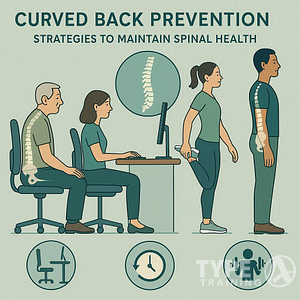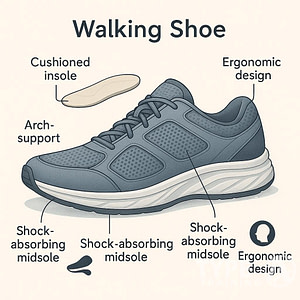How beneficial are Epsom salt baths for recovery?
Epsom salt baths are often used to help relax muscles, reduce swelling, and speed up recovery.
Athletes and those involved in intense physical activities frequently use Epsom salt baths to alleviate muscle pain and soreness.
Epsom salt, also known as magnesium sulfate, offers various health benefits.
Popular posts:
Soaking in an Epsom salt bath can help loosen stiff joints and relax muscles, making it a popular choice among those recovering from workouts or suffering from arthritis pain.
It has anti-inflammatory properties which can aid in reducing swelling and promoting recovery.
However, it’s important to be aware of safety considerations when using Epsom salt baths.
Individuals with severe skin inflammation or open wounds are generally advised against using them.
For the best results, soak for at least 15 minutes to maximize the benefits.
Key Takeaways
- Epsom salt baths help relax muscles and reduce swelling
- Soaking for at least 15 minutes is recommended
- Avoid Epsom salt baths if you have severe skin inflammation or open wounds
What Are Epsom Salts?
Epsom salts, primarily composed of magnesium sulfate, are popular for their various uses, ranging from health benefits to household applications. Understanding the chemical make-up and distinctions from other salts is key.
Chemical Structure of Magnesium Sulfate
Epsom salts are chemically known as magnesium sulfate. This compound consists of one magnesium atom, one sulfur atom, and four oxygen atoms (MgSO₄).
Magnesium sulfate is often hydrated. The heptahydrate form (MgSO₄·7H₂O) is most common in household Epsom salts.
Magnesium plays a significant role in numerous bodily functions.
It helps with nerve and muscle function, supports a healthy immune system, and maintains strong bones.
Sulfate ions aid in detoxification and are involved in synthesizing essential macromolecules.
Epsom Salt vs. Other Salts
Unlike table salt (sodium chloride), Epsom salts have unique properties. Sodium chloride is primarily used for culinary purposes.
Epsom salts, however, are used in baths to relieve muscle soreness and in gardening to improve plant health.
Dead Sea salts, another comparison, are rich in minerals like magnesium, potassium, and calcium. They are known for therapeutic uses and skin health benefits.
Understanding the differences helps in choosing the right type of salt for your specific needs.
Epsom salts offer distinct advantages due to their magnesium and sulfate content, particularly in health and wellness applications.
The Role of Epsom Salts in Muscle Recovery
Incorporating Epsom salt baths into your post-workout routine can help reduce inflammation and soothe sore muscles. This practice capitalizes on magnesium sulfate’s properties to support muscle recovery.
Alleviating Muscle Soreness
Epsom salt baths are widely recommended to address muscle soreness.
Fitness experts suggest that the magnesium in Epsom salts helps relax muscles, which can ease the discomfort you feel after intense physical activities.
Dissolved in water, magnesium can be absorbed through the skin, potentially relieving cramps and tension.
Many find that soaking in an Epsom salt bath for 20 to 40 minutes helps alleviate the stiff, sore feeling that often follows heavy exercise.
For best results, add about 2 cups of Epsom salts to lukewarm bathwater.
Reducing Inflammation and Swelling
Post-workout, inflammation and swelling can impede your recovery.
Epsom salts contain magnesium, known for its anti-inflammatory properties.
By soaking in an Epsom salt bath, you can help to reduce inflammation and swelling in the muscles, which is crucial for quicker recovery.
This method can be beneficial not only for performance athletes but also for anyone experiencing muscle-related issues.
The magnesium sulfate in Epsom salts helps by reducing fluid retention and swelling.
For targeted inflammation and swelling, consider a localized soak, like soaking just your feet or hands.
Health and Therapeutic Uses of Epsom Salt Baths
Epsom salt baths serve multiple health and therapeutic purposes, primarily by helping alleviate stress and enhancing sleep quality. These uses make it a popular choice for home spa treatments.
Stress Relief and Relaxation
Epsom salt baths are widely valued for their ability to reduce stress.
The magnesium in Epsom salt is absorbed through the skin, which may help to increase magnesium levels in your body. This, in turn, can help diminish the effects of stress hormones.
Warm water itself aids in relaxing muscles and loosening stiff joints.
When combined with Epsom salt, it can amplify these effects, making it easier to unwind.
Additionally, many people find soaking in an Epsom salt bath can ease muscle pain and discomfort from conditions such as arthritis or muscle fatigue.
This is beneficial not just physically but mentally, as muscle relaxation often contributes to a heightened sense of well-being and reduced anxiety.
Improving Sleep Quality
Epsom salt baths may also support better sleep.
High levels of magnesium are known to boost the production of melatonin, a hormone that regulates sleep. This can lead to improved sleep patterns and deeper rest.
A warm Epsom salt bath can also lower
The ritual of taking a bath before bedtime helps signal to your body that it’s time to relax and unwind.
This can be particularly helpful if you suffer from sleep disorders or insomnia.
Regular use of Epsom salt baths might become a simple yet effective part of your nighttime routine, promoting not just immediate relaxation but longer-term sleep health.
For more information on the benefits and uses, visit Epsom Salt: Benefits, Uses, and Side Effects.
The Science Behind Epsom Salt Baths
Epsom salt baths are often praised for their ability to aid in muscle recovery and relaxation. Scientific studies and research outcomes provide insights into how they may benefit the body, particularly through magnesium absorption.
Studies and Research Outcomes
Research on Epsom salt baths indicates several potential benefits.
For example, soaking in warm water can relax muscles and loosen stiff joints.
Some studies suggest that Epsom salt may help with reducing inflammation and pain, particularly in conditions like arthritis.
Magnesium absorption through the skin is another area of interest.
While the evidence is mixed, some researchers believe that magnesium in Epsom salt helps relax muscles and relieve pain by entering the body through the skin.
The increase in relaxation and reduction in stress is often reported by individuals who regularly use Epsom salt baths.
Proper Use and Safety Considerations
When taking an Epsom salt bath, it’s important to use the right amount of Epsom salt and understand potential side effects. Consulting a doctor, especially if you have specific health issues, is also crucial.
Understanding Side Effects
Epsom salt baths provide benefits, yet some potential side effects require consideration.
For instance, soaking in the bath for too long may cause dry or irritated skin.
Additionally, using Epsom salt on open wounds can lead to discomfort or infection risks.
Consuming Epsom salt can lead to diarrhea and other gastrointestinal issues.
It is generally safe for external use, but ingesting it should be done only under a doctor’s guidance.
Always refer to the manufacturer’s instructions to avoid adverse reactions.
Consulting a Doctor
Before integrating Epsom salt baths into your routine, consulting a healthcare professional is wise, particularly if you have underlying health problems.
People with diabetes, hypertension, or kidney issues should seek medical advice due to potential complications.
Pregnant women should also discuss with their doctor before use.
A healthcare provider can guide you on the proper dosage and frequency, ensuring it aligns with your health needs.
This precaution helps maximize the benefits while mitigating any risks.
Incorporating Epsom Salt Baths into Fitness and Training
Epsom salt baths can play a pivotal role in your fitness and training regimen. You’ll find specific benefits during post-workout recovery and for athletes and runners seeking muscle relaxation and faster recovery.
Post-Workout Recovery
Epsom salt baths are highly recommended for post-workout recovery.
After intense training sessions or workouts, your muscles can become sore and inflamed.
By adding two cups of Epsom salt to a lukewarm bath and soaking for 20 to 40 minutes, the magnesium sulfate in the salt helps reduce muscle tension and swelling.
You can also opt for a quicker method by scrubbing Epsom salt into your skin during a shower if a bath isn’t feasible.
This technique allows the minerals to be absorbed through your skin, giving you the same benefits.
The soothing process aids in speeding up recovery, allowing you to be ready for your next workout sooner.
Epsom Salts for Athletes and Runners
Athletes and runners often experience muscle fatigue and soreness that can hinder subsequent training sessions. Epsom salt baths are especially beneficial in reducing these discomforts.
Dissolving Epsom salt in a warm bath releases magnesium and sulfate. These are absorbed through the skin to help relax muscles and decrease inflammation.
Athletes and runners should soak in an Epsom salt bath for at least 12 minutes to maximize benefits. It’s an effective way to alleviate joint and muscle pain after a strenuous run or athletic activity, making it an essential part of any training plan.
For more detailed information, you can read further about why athletes love Epsom salt, especially for muscle relaxation and quicker recovery.
Epsom Salts for Joint and Arthritis Relief
Epsom salt baths are often utilized to relieve joint pain and aid arthritis sufferers. The magnesium found in Epsom salts is believed to help reduce inflammation and soothe muscles, making it a popular home remedy.
Soothing Joint Pain
Epsom salts may help alleviate joint pain by relaxing muscle stiffness and reducing inflammation. When dissolved in warm water, the magnesium in Epsom salts can be absorbed through the skin, potentially easing discomfort in areas plagued by arthritis or muscle pain.
A warm soak in an Epsom salt bath can be particularly beneficial for seniors experiencing joint discomfort due to aging. This practice can also help in reducing muscle cramps that often accompany joint issues. A soak of around 20 to 30 minutes is usually recommended to maximize these benefits.
Benefits for Arthritis Patients
For people with arthritis, Epsom salt baths can offer a natural way to manage pain. The minerals help reduce inflammation and swelling, which can soothe joints affected by rheumatoid arthritis. Some studies suggest that Epsom salts could offer more relief than regular saltwater, particularly for those with severe symptoms.
After soaking in the bath, it is advisable to rinse off and moisturize the skin to prevent dryness, as Epsom salt can be dehydrating. This approach also benefits those with psoriatic arthritis, as it can help manage both joint pain and skin conditions simultaneously.
Epsom Salt Bath Procedures and Recommendations
Epsom salt baths are beneficial for muscle recovery and overall relaxation. Proper preparation and understanding of the ideal procedure can maximize these benefits.
Preparing the Ideal Epsom Salt Bath
To get the best results, it’s crucial to prepare your Epsom salt bath correctly. Begin by filling your bathtub with warm water. The water should be very warm but comfortable to the touch.
While the water is running, add 1-2 cups of Epsom salt. This helps the salt dissolve more effectively. Stir the water gently to ensure the Epsom salt is evenly distributed. This creates an optimal soaking environment.
Using warm water is key, as it helps open pores and allows better absorption of magnesium. Ensure all the salt has dissolved to avoid any residue on your skin.
Recommended Duration and Frequency
For maximum benefits, immerse yourself in the bath for 15-20 minutes. This period allows your body to absorb magnesium and relieve muscle tension.
It’s generally advised to take Epsom salt baths no more than three times a week. Daily baths are not recommended as too much exposure can dry out your skin.
After soaking, rinse off with a quick shower to remove any remaining salt residue. Pat your skin dry with a towel, rather than rubbing, to maintain skin hydration.
Frequently Asked Questions
Epsom salt baths can provide significant benefits for muscle recovery and relaxation. This section answers common questions related to the use of Epsom salt baths.
What are the side effects of an Epsom salt bath?
Some individuals might experience skin irritation or allergic reactions. It’s important to do a patch test if you have sensitive skin. Extended exposure in the bath could lead to dehydration or prune-like skin.
How much Epsom salt should be used in a bath for recovery?
For optimal benefits, dissolve 2 cups of Epsom salt in your bathtub filled with warm water. This concentration helps aid muscle recovery and relaxation.
Can Epsom salt baths be used to treat sore muscles without actually bathing?
Yes, you can scrub Epsom salt into your skin while showering if a bath isn’t an option. This method can still help reduce muscle soreness and inflammation.
How often is it safe to take Epsom salt baths within a single week?
It’s generally safe to take Epsom salt baths up to three times a week. Overuse could lead to skin dryness or irritation, so it’s best to monitor how your body responds.
What are the benefits of taking an Epsom salt bath?
Epsom salt baths help relieve muscle soreness, reduce inflammation, and promote relaxation. The magnesium absorbed through the skin can support muscle and nerve function.
Is it necessary to shower after taking an Epsom salt bath?
It is recommended to rinse off with clean water after an Epsom salt bath. This helps remove any salt residue from your skin. It also prevents potential irritation.

















